ARRIVE IN DELHI
On arrival at Delhi airport you will be met and assisted airport and transferred to hotel for check in.
Overnight stay at hotel.
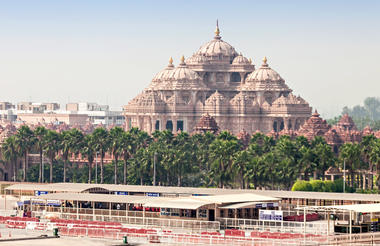

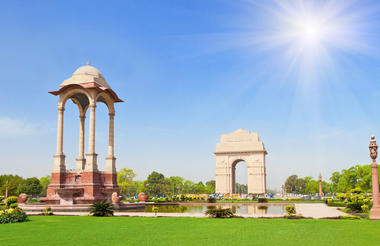
FLIGHT FROM DELHI TO PARO
Today after breakfast at hotel, you will be transferred to Delhi airport for your flight to Paro.
The flight to Paro is one of the most spectacular in entire Himalayas. Flying along the Himalayan range from Kathmandu, the journey offers fascinating views and an exciting descent into the Kingdom. Bhutan’s first gift to you as you disembark from the aircraft will be cool, clean fresh mountain air. After immigration formalities and baggage collection, you will be met and afterwards drive to Thimpu, the capital town of Bhutan. The capital town of Bhutan and the center of government, religion and commerce, Thimpu is a unique city with unusual mixture of modern development alongside ancient traditions. With the population of about 90,000 it is perhaps still the world’s only capital city without a traffic light. On arrival, in Thimpu check-into the hotel.
Evening an exploratory walk around Thimpu Main Street and market area.
Overnight stay at hotel
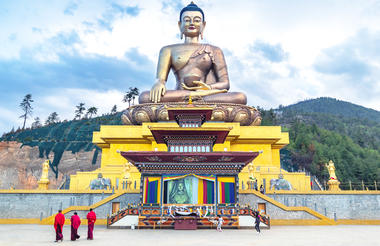
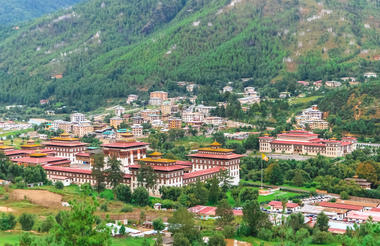
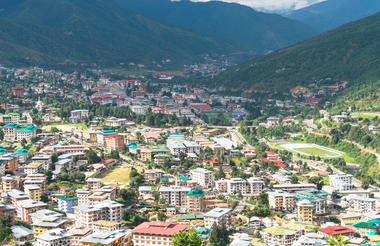
THIMPU
After breakfast at Hotel, proceed for the guided tour of city’s main attractions that includes:
TEXTILE MUSEUM: is worth a visit to get to know the living national art of weaving. Exhibitions introduce the major weaving techniques, styles of local dress and textiles made by women and men.
NATIONAL LIBRARY: The history of Bhutan lies imprinted in archaic texts, which are preserved at the National Library. Besides thousands of manuscripts and ancient texts, the library also has modern academic books and printing blocks for prayer flags.
INSTITUTE FOR ZORIG CHUSUM: Commonly known as Arts & Crafts School or Painting School, the Institute offers a six-year course on the 13 traditional arts and crafts of Bhutan. On a visit, one can see students learning the various skills taught at the school.
SIMPLY BHUTAN MUSEUM: The newly commissioned museum depicts the ancient Bhutanese architecture which is being lost to modernization. The uniqueness of the structure is in its composition of the materials used. The structure is built reusing old timber, window and door frames and other items from traditional and old demolished houses. The best part is the portrayal of the age-old life styles of the Bhutanese people.
Lunch followed by city tour that includes:
MEMORIAL CHORTEN: The stupa built in the memory of Bhutan's third King, His Late Majesty, and King Jigme Dorji Wangchuk, who is popularly regarded as Father of modern Bhutan. The paintings and statues inside the monument provide a deep insight into Buddhist philosophy.
Buddha Point (Kuensel Phodrang). Located at a short drive from Thimphu city centre, visitors can get a good overview of the Thimphu valley from the Buddha point (Kuensel Phodrang). You can pay your obeisance and offer prayers to the Buddha, the largest statue in the country and then walk around and take a glimpse of the valley.
Conclude the tour of the day with a visit of Trashichhoedzong, “fortress of the glorious religion”. This is the center of government and religion, site of monarch’s throne room and seat of Je Khenpo or Chief Abbot. Built in 1641 by the political and religious unifier of Bhutan, Shabdrung Ngawang Namgyal, it was reconstructed in 1960s in traditional Bhutanese manner, without nails or architectural plans.
Overnight stay at hotel.
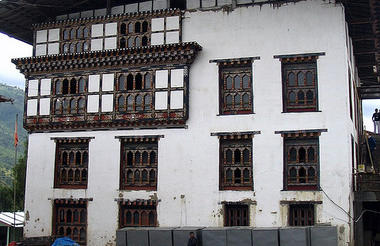


Thimpu National library
Simply Bhutan Museum
Trashichhoedzong
DRIVE FROM THIMPHU TO PUNAKHA (75 KM, 3 HRS)
After breakfast at hotel, drive to Punakha across Dochula pass (3, O8Om). In Bhutan, the passes are marked by a large Bhutanese Chorten and prayer flag. Dochula pass offers the most spectacular view over the high peaks of the eastern Himalayas on a clear day.
Afternoon visit Punakha Dzong or (Palace of Great Happiness), built at the junction of the Phochu and Mochu rivers in 1637 by Shabdrung Ngawang Namgyal. This majestic dzong served as both the religious and the administrative center of Bhutan in the past. It measures some 600 by 240 feet and has a six-story, gold-domed tower. Inside are courtyards and religious statuary that hint at the depth of history and spiritual tradition embodied here. Your guide will illuminate your understanding of this intricate culture that is exotic to us, though long established here.
later in the day excursion to chimi lakhang (from hotel it is about 15 minutes’ drive till motorable road and then walk starts through paddy fields and villages. this is total about 1.1/2 hour walk, including both way) the chimi lhakhang, situated on a hillock in the centre of the valley, also known as the temple of fertility. It is widely believed that couples who do not have children and wanting one, if they pray at this temple, they are usually blessed with a child very soon. The trail leads across rice fields to the tiny settlement of pana, meaning ‘field’. A walk through the village near the temple will give you rare glimpses into the daily life and lifestyle of the villagers.
Overnight stay at hotel



DRIVE FROM PUNAKHA TO PARO (125 KMS, 04 HRS)
After breakfast at Hotel, drive back to Paro descending back down from Dochu La, follow the way back up the dramatic Wang Chhu and Paro Chhu river valleys, before crossing through Paro Town towards the north end of the valley.
En route visit Simtokha Dzong, the place of profound tantric teaching, this dzong now houses a school for the study of the Dzongkha language.
Later in the day after checking into hotel, proceed to visit Ta Dzong, originally built as Watchtower, which now houses National Museum. The extensive collection includes antique thangkha paintings, textiles, weapons & armour, household objects and a rich assortment of natural and historic artifacts.
Then walk down the trail to visit Rinpung Dzong, meaning (“fortress of the heap of jewels”), which has a long and fascinating history. Along the wooden galleries lining the inner courtyard are fine wall paintings illustrating Buddhist lore such as four friends, the old man of long life, the wheel of life, scenes from the life of Milarepa, Mount. Sumeru and other cosmic Mandala.
Overnight stay at hotel.



Simtokha Dzong
Ta Dzong
Rinpung Dzong
PARO
After breakfast at hotel, excursion to Taktshang Monastery (5hrs hike): It is one of the most famous of Bhutan’s monasteries, perched on the side of a cliff 900m above the Paro valley floor. It is said that Guru Rinpoche arrived here on the back of a tigress and meditated at this monastery and hence it is called ‘Tiger’s Nest’. This site has been recognised as a most sacred place and visited by Shabdrung Ngawang Namgyal in 1646 and now visited by all Bhutanese at least once in their lifetime. On 19 April, 1998, a fire severely damaged the main structure of building but now this Bhutanese jewel has been restored to its original splendour.
On the way back to town stop at Drukgyel Dzong, a ruined fortress where Bhutanese warriors fought Tibetan invaders centuries ago. The snowy dome of sacred Chomolhari, "mountain of goddess'' can be seen in all her glory from the approach road to the Dzong.
Along the way, visit the 7th century Kyichu Lhakhang, one of the 108 temples built in the Himalayas by Tibetan King, Songtsen Gampo. The building of this temple marks the introduction of Buddhism in Bhutan.
Evening an exploratory walk around main street and market area.
Overnight stay at hotel



Taktshang Monastery
Drukgyel Dzong
Kyichu Lhakhang
FLIGHT FROM PARO TO KATHMANDU
After early breakfast at hotel, you will be transferred to Paro airport to board the flight for Kathmandu. On arrival at Airport, you will be met, assisted and transfer to hotel for check in.
Kathmandu is the capital of Nepal and the largest urban agglomerate of Nepal. The agglomerate consists of Kathmandu Metropolitan City at its core, and its sister cities Patan, Kirtipur, Thimi, and Bhaktapur. It also includes the recently recognized urban areas of Shankhapur, Karyabinayak, Champapur, Banepa, Dhulikhel and Panauti. According to a census conducted in 2011, Kathmandu metropolis alone has 975,453 inhabitants, and the agglomerate has a population of more than 2.5 million inhabitants. The city stands at an elevation of approximately 1,400 meters (4,600 ft) in the bowl-shaped Kathmandu Valley of central Nepal. It is surrounded by four major mountains: Shivapuri, Phulchoki, Nagarjun and Chandragiri.
Overnight stay at hotel.



KATHMANDU
After breakfast at Hotel, morning sightseeing tour of Boudhnath and Pashupatinath. In the evening sightseeing tour of Bhaktapur City
BOUDHANATH:
This great stupa is one of Nepal’s most distinctive monuments and one of the most important Buddhist sites in Nepal and, with a diameter of over 100 meters, amongst the largest in the world. There are a number of legends accounting for the Stupa’s construction, but it is generally believed to date from the 5th century. All Stupas contain holy relics and Bouddha is said to contain the remains of the past Buddha Kasyapa. Bouddha is a particular focus for Kathmandu’s Tibetan community and throughout the day there is a constant stream of people circling the stupa spinning prayer wheels and reciting mantras. Surrounding the stupa are six major monasteries and a host of smaller ones as well as cafes, restaurants and shops selling Tibetan carpets and Newari silversmiths.
PASHUPATINATH: This is Nepal’s most sacred Hindu shrine and one of the subcontinent’s great Shiva sites. The supreme holiness of the site stems from the Shiva linga enshrined in its main temple and its location. It expresses the very essence of Hinduism as pilgrims, priests, devotes, temples, ashrams, images, inscriptions and cremation Ghats intermingle with the rituals of daily life, all sprawled along the banks of the sacred Bagmati River. The temple’s origins are obscure, an inscription dates from 477, but a shrine may have stood here for 1000 years before that.
Later transfer for sightseeing tour of Bhaktapur
Bhaktapur Durbar Square: As you walk in, you cannot but be overcome by a feeling of inner harmony. Such is the art and architecture and the special layout here. The Palace of 55 Windows built during the period of King Bhupatindra Malla in 1754 situated to the left as you enter through the city gate, inspires admiration. The National Art Gallery is also housed inside. The palace entrance, the Golden Gate known as Sunko Dhoka in Nepali is a masterpiece in reposes art. In front of the palace building is a medley of temples of various designs. Amongst the three Durbar Squares in the Valley, the Durbar Square in Bhaktapur is the best preserved one.
Overnight stay at hotel.



DRIVE FROM KATHAMANDU TO POKHRA (210 KMS / 07 HRS)
After breakfast at hotel, drive to Pokhara, enchanting city nestled in a tranquil valley at 827 m altitude. The valley, covered with thick forests brightened rivers and pristine lakes, offers magnificent views of the Himalayas and the mountains Dhaulagiri, Manaslu, Machapuchare and five peaks of Annapurna.
Overnight at Hotel in Pokhara



POKHRA
Early morning sunrise trip to Sarangkot
PM: Half day sightseeing tour of Pokhara City & 1 hour boating at Lake Phewa
Sarangkot
The village of Sarangkot (1592m) is situated on the top of a hillock just north of Phewa Lake. One gets to see beautiful views of Sunrise and Sunset from Sarangkot as the Sun splashes On a clear day, the panoramic ranges of Annapurna, Dhaulagiri, Machhapuchhre and Ganesh Himal can be observed from here.
Devi’s fall:
Locally known as Patale Chango (Hell’s fall) also known as Devin’s and David’s is a lovely Waterfall is about 2 km south West of Pokhara airport on the Siddhartha Highway. Legend has it that a trekker by the name of Davy was washed away by the Padi Khola and mysteriously disappeared down into an underground passage beneath the fall.
Gupteshwor Cave:
Gupteshwor Gupha, a sacred cave, lies 2 km from Pokhara airport on the Siddhartha Highway leading southwest from the city. The entrance is right across from Devi's fall and the cave is almost 3 km long. It has some big hall-size rooms and some passages where you have to crawl on all fours. This cave holds special value for Hindus since a phallic symbol of Lord Shiva is preserved here in the condition it was discovered. An entrance fee of Rs. 5 is charged and taking pictures inside the cave is prohibited.
The Old Bazaar + Bindhyabasini Temple:
Pokhara's traditional bazaar is colorful and so are its ethnically diverse traders. In its temples and monuments can be seen ties to the old Newar Architecture of the Kathmandu valley, Located about 4 km from Lakeside, the market S original charm is still evident. This area is strewn with shops selling commodities ranging from edibles to and cloth to cosmetics and gold is a pleasant and shady spot to stroll around. In middle of afternoon you will make a nice promenade by boat on the lake Phewa
Overnight at Hotel in Pokhara



DRIVE FROM POKHARA TO KATHMANDU (210 KMS & 07 HRS)
This morning after breakfast leave Pokhra and drive to Kathmandu
Dinner & Overnight stay at hotel















Morning Leisure at Hotel.
In the afternoon, you will be transferred to Goi Airport for your flight to London with many memories to share.
Overnight at hotel.




